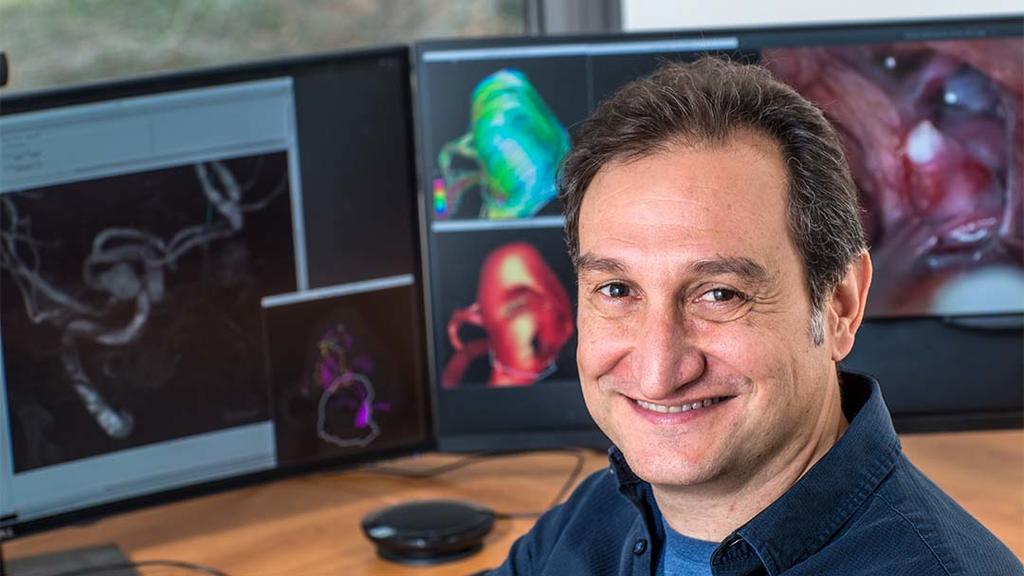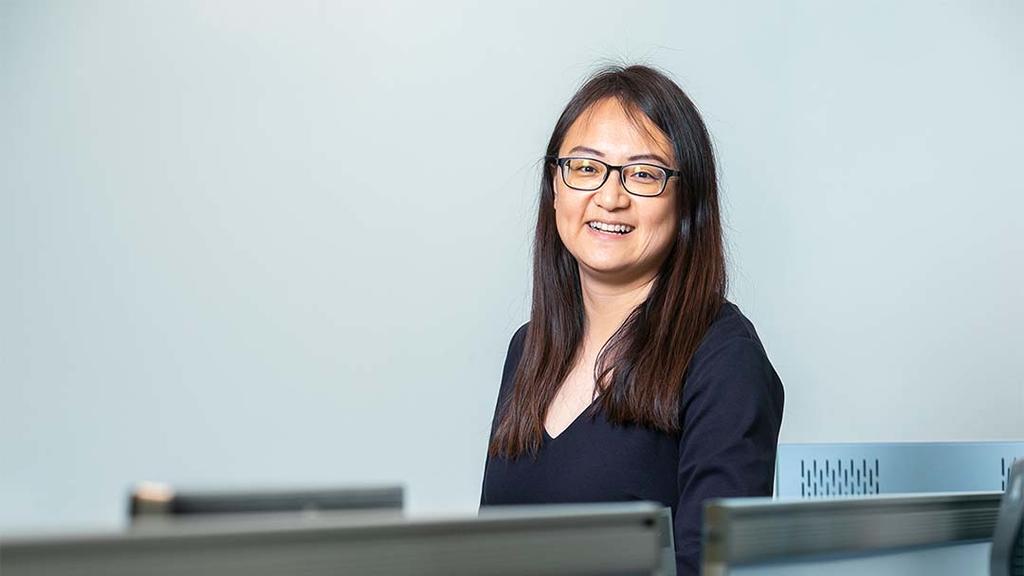Computational biomedicine uses patient-specific image-based computational modeling to understand the mechanisms driving certain diseases. Modeling is an intrinsic component of most biomedical engineering research.
Faculty:
Juan Cebral, Professor
Qi Wei, Associate Professor
In this research pillar, we focus on blood flow and aneurysms, the biomechanics of eye movement, and the extraction of wellness indicators from video feature analyses.
Our areas of expertise include:
Aneurysm risk assessment through computational modeling and minimally invasive procedures
This research examines the blood flow in brain aneurysms to improve understanding of the causes, enhance aneurysm risk assessment, and evaluate devices and minimally invasive procedures. We develop techniques and tools for modeling blood flows from 3D medical images and apply these techniques to study cerebrovascular diseases and their treatment. Principal investigator: Juan Raul Cebral.

Juan R. Cebral, professor in the Bioengineering Department, focuses on examining the blood flow in brain aneurysms to improve understanding of the causes, enhance aneurysm risk assessment, and evaluate devices and minimally invasive procedures.
Data-driven biomechanical simulation
Our focus is applying biomechanical models and computational simulation complemented by experimental data to advance our knowledge of human movement and to improve the treatment of movement disorders. Our computational modeling approach enhances understanding of the basic components involved in movement in a constructive way. In collaboration with clinicians, we study the biomechanics of strabismus and pelvic floor disorders in order to identify potential new treatment regimes. Principal investigator: Qi Wei.

Qi Wei, associate professor in the Bioengineering Department, develops realistic biomechanical models to study human movement and associated disorders.
